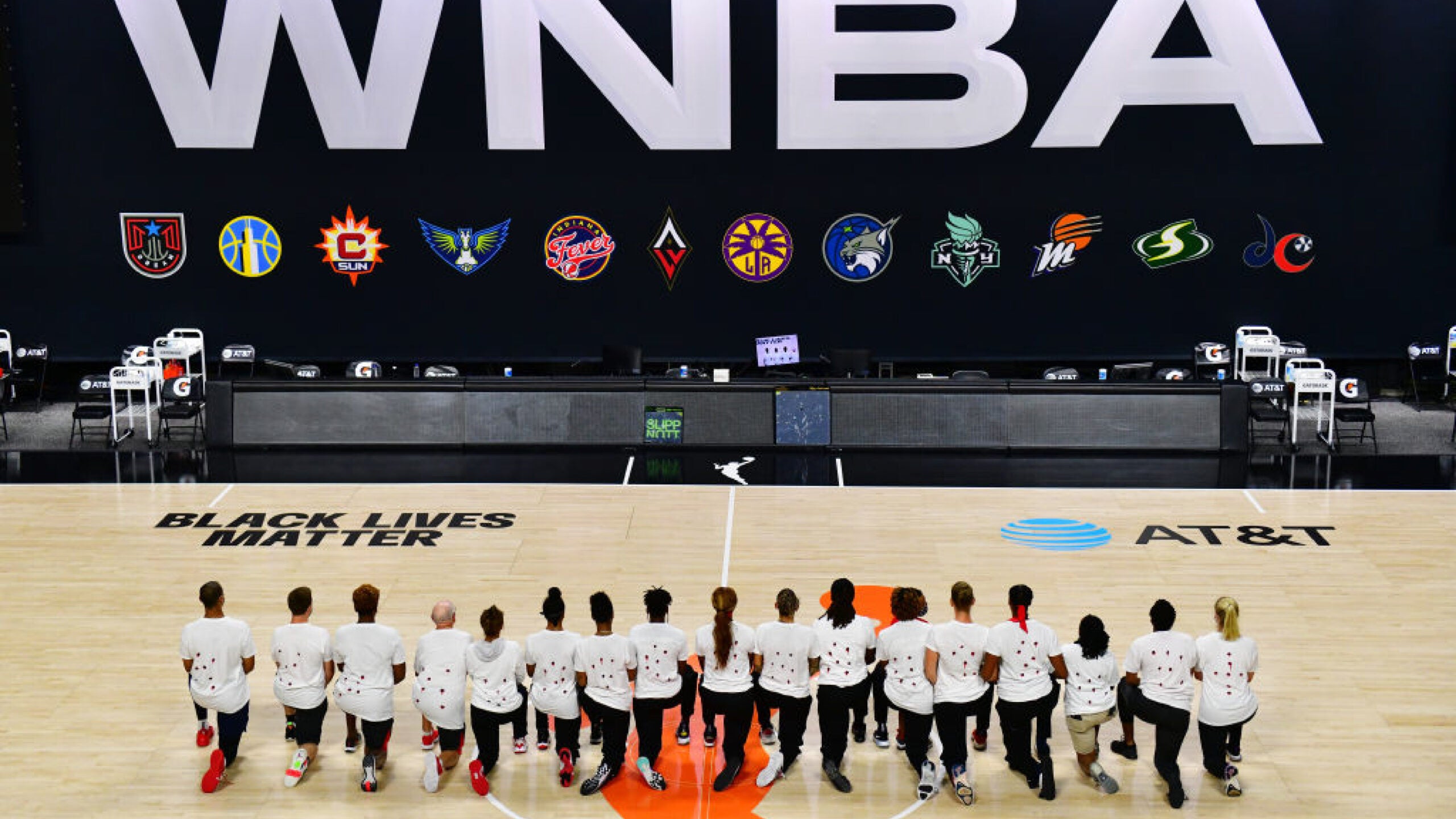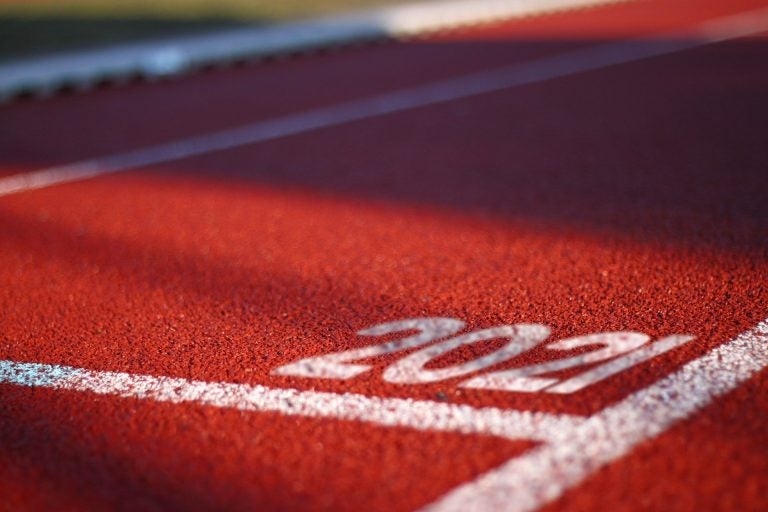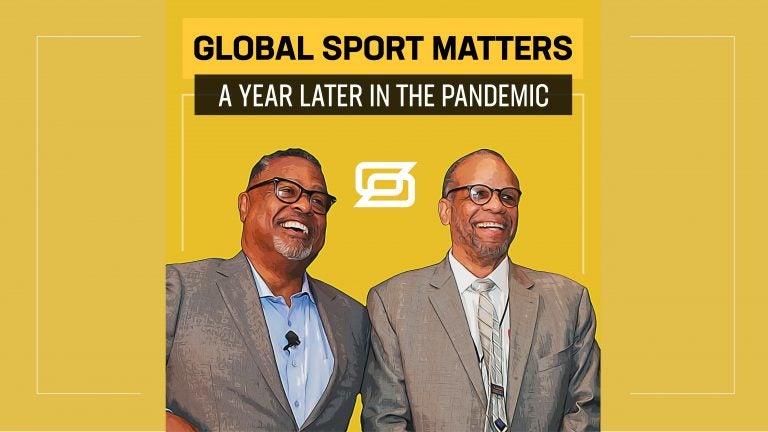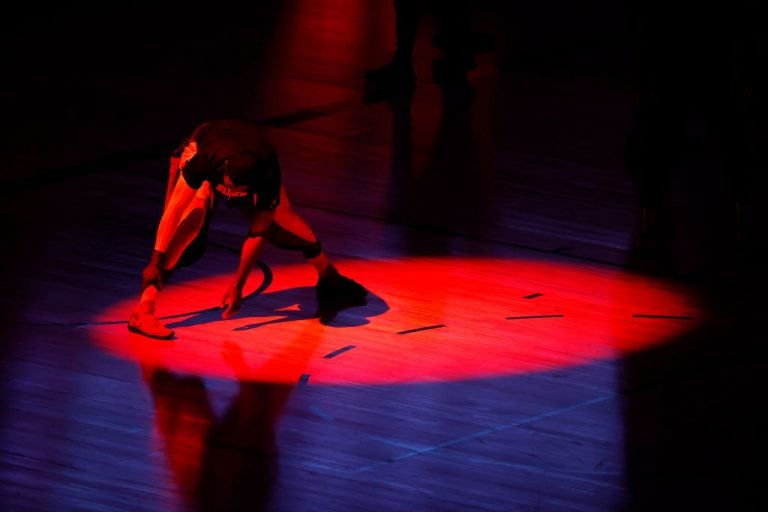“It’s in Our DNA”: WNBA Players' Record of Activism
Why this matters
Over the past year, COVID-19 didn’t stop an ongoing wave of athlete activism from cresting across the sports world – particularly in the WNBA, where players were both eager and ready to seize the moment.
In August 2020, inside the National Basketball Association’s coronavirus-resistant “bubble” at Walt Disney World, the Milwaukee Bucks refused to take the court for Game 5 of a playoff series against the Orlando Magic. Instead, players participated in a phone call with Wisconsin’s attorney general and lieutenant governor to discuss getting justice for Jacob Blake, a Black man who three days prior was shot in the back by a white police officer in Kenosha.
Other NBA playoff teams also decided not to play that night, and their actions were followed by similar player sit-outs across sports. All of this happened exactly four years after Colin Kaepernick helped inspire an ongoing wave of athlete activism by sitting during the playing of the national anthem at a National Football League preseason game, subsequently stating that he was “not going to stand up to show pride in a flag for a country that oppresses Black people and people of color.”
Yet while the image of empty NBA courts in Orlando, Florida, captured national attention, the most impactful athlete activism of last summer took place about 100 miles southwest at the IMG Academy in Bradenton, Florida, where the Women’s National Basketball Association was playing in a pandemic bubble of its own.
It was there that the league’s players amplified the often-overlooked stories of Black women who have been killed by law enforcement by dedicating their season to justice for Breonna Taylor and the #SayHerName campaign; that Washington Mystics players took the floor wearing white T-shirts painted with red holes on the back, signifying the bullets shot into Blake; and that Atlanta Dream players responded to racist political rhetoric from the team’s co-owner, Georgia Republican Sen. Kelly Loeffler, by endorsing her Democratic opponent, Rev. Raphael Warnock, a move that played a key role in Loeffler’s loss and the flipping of the control of the Senate to the Democrats.
For WNBA players, making an impact on and off the court is nothing new. As members of a predominantly Black women’s sports league with a large contingent of queer athletes, they long have had to fight for recognition and respect inside and outside sports. No surprise, then, that in the summer of 2016 – before Kaepernick’s first protest – entire WNBA teams and even some owners participated in a sustained public campaign showing support for Black Lives Matter.
Since then, the league’s players repeatedly have taken stands in political and cultural battles over gender pay equity, Black rights, LGBTQ rights, reproductive rights, and voting rights. “Think about history in general,” says Elizabeth Williams, a center for the Dream and WNBA Players Association secretary. “It’s usually Black women who are leading these marches and movements.”
Los Angeles Sparks forward and players association president Nneka Ogwumike has a more succinct explanation. Activism, she says, “is in our DNA.”
More than T-shirts and hashtags
During a 48-hour period in the summer of 2016, videos connected to the deaths of two Black men went viral on social media.
First, footage of a Baton Rouge, Louisiana, police officer shooting and killing 37-year-old Alton Sterling – while he was restrained on the ground outside of a gas station – circulated on Twitter. Next, a police officer in St. Paul, Minnesota, shot and killed 32-year-old Philando Castile in his car. Castile’s daughter was in the backseat, and his girlfriend streamed the aftermath on Facebook Live.
Two days later, the Minnesota Lynx held a rare pre-game news conference. Speaking to reporters about police brutality and systemic racism, team captains Maya Moore, Seimone Augustus, Rebekkah Brunson, and Lindsay Whalen wore T-shirts that on the front bore the phrases “Change Starts With Us” and “Justice & Accountability” and on the back featured Castile’s name, Sterling’s name, the phrase “Black Lives Matter,” and the shield of the Dallas Police Department, honoring five Dallas police officers who had been shot and killed by a heavily-armed military veteran during a BLM protest earlier that week.
“Senseless violence is a problem. The divide is way too big between our community and those who have vowed to protect and serve us.” - Maya Moore & Rebekkah Brunson
“Racial profiling is a problem,” Moore and Brunson said in a statement that Brunson read at the news conference. “Senseless violence is a problem. The divide is way too big between our community and those who have vowed to protect and serve us.”
That news conference came out of candid conversations between Lynx players and head coach Cheryl Reeve. Reeve fully supported her players but also warned them that they could face blowback for taking a public stand – which happened immediately, as four off-duty police officers working security at that night’s game walked off the job after seeing the players’ T-shirts.
The next day, New York Liberty players wore shirts reading “#BlackLivesMatter” and “#Dallas5” on the front, and “#______” on the back, representing deaths yet to come. When players for other teams followed suit, wearing BLM or all-black T-shirts in warmups, the WNBA fined them for violating its uniform rules. This infuriated players, who felt the league should support its Black athletes. The Liberty, Mystics, Indiana Fever, and Seattle Storm subsequently held coordinated media blackouts, refusing to discuss basketball and talking only about police brutality and systemic racism.
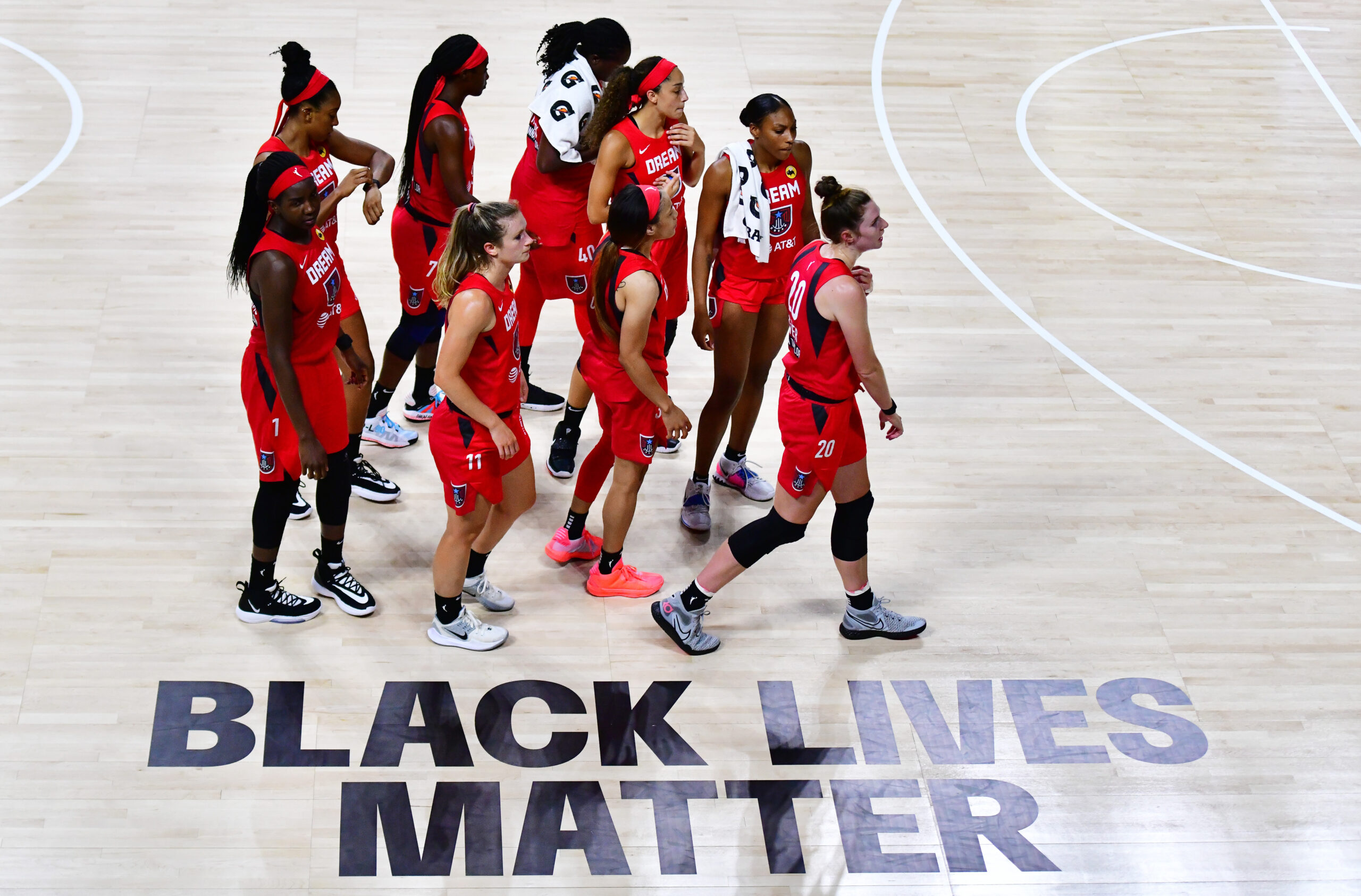
Within a few days, the league rescinded the fines – and WNBA players began to realize the power of their platform. “I think that was part of our growth, for sure,” Williams says. “I think that step was really important in understanding how to approach everything, and understanding what activism looks like.”
More steps followed. In 2017, the Storm held a Planned Parenthood rally before a nationally televised game. A few weeks later, after President Donald Trump called Kaepernick and other NFL players who took a knee during the national anthem “sons of bitches,” the Sparks refused to come onto the court during the national anthem before WNBA Finals games.
Building on the solidarity and momentum of that activism, WNBA players opted out of their collective bargaining agreement and began pushing for a better deal. In early 2020, they announced the results live on “Good Morning America”: a historic new labor agreement that nearly doubled maximum salaries, provided more opportunities for players to earn additional money via team and league marketing deals, dramatically improved maternity leave and child care, and upgraded flight and hotel accommodations.
Then COVID-19 hit. Sports came to a sudden halt. In May, George Floyd died under the knee of Minneapolis police officer Derek Chauvin; as multiple officers held Floyd down in the street, Chauvin knelt on his neck for nine minutes and 29 seconds.
Floyd’s death sparked large protests across the nation, ushering a summer of reckoning over police brutality and anti-Black racism. Suddenly, the entire WNBA season was in doubt. The pandemic threatened the health and safety of everyone involved. And many players wanted to prioritize fighting for racial justice over basketball.
Ultimately, they found a way to do both.
Entering the political arena
The WNBA and its players agreed to hold a shortened, 22-game season on the IMG campus in Bradenton. Within that bubble, the players’ social justice platform, called The Justice Movement, amplified BLM, encouraged people to register to vote, and each week shared the story of a different Black woman killed by law enforcement. All players wore jerseys with “Breonna Taylor” printed on the back; they also played on courts bearing the phrase “Black Lives Matter.”
In addition, the players formed a Social Justice Council – consisting of six players from different teams and experienced grassroots organizers – to lead activism efforts. This infrastructure proved crucial the day they arrived at IMG, when Loeffler released an open letter to the league denouncing its plans to dedicate the season to BLM and stating that “I adamantly oppose the Black Lives Matter political movement, which has advocated for the defunding of police, called for the removal of Jesus from churches and the disruption of the nuclear family structure, harbored anti-Semitic views, and promoted violence and destruction across the country.”
To many political observers, Loeffler’s motives appeared transparent: By publicly bashing BLM, she was attempting to curry culture war favor from the Republican voters she needed to retain her Senate seat in the upcoming November election. But WNBA players, especially members of the team Loeffner had co-owned since 2011, had other ideas.
Williams, the longest-tenured Dream player, had helped negotiate the league’s CBA. That experience taught her how to manage multiple personalities and accommodate strong emotions while crafting a cohesive strategy and preparing people to execute it.
She gathered her teammates on a Zoom call and worked on drafting a team statement in response to Loeffler’s comments. Meanwhile, WNBPA vice president Sue Bird was put in charge of coming up with a concrete action the players could take. She came up with the idea of looking into Loeffler’s opponents in the Senate race, and she reached out to two powerful Georgians – voting rights activist Stacey Abrams, who is on the WNBA's advisory board, and former WNBA president Lisa Borders – for advice. They put Bird in touch with Warnock, a pastor with an extensive history of advocating for civil rights.
After thoroughly vetting Warnock, Bird and other WNBPA leaders discussed his record with Dream players, who decided to publicly endorse his candidacy. On August 4, the Dream showed up to their nationally televised game against the Phoenix Mercury wearing “Vote Warnock” T-shirts. Many across the league joined them.
When the WNBA players first wore the Warnock T-shirts, he was polling at only 9 percent. Over the next week, his polling and fundraising numbers skyrocketed.
Less than a month later, Blake was shot in Kenosha. Inside the WNBA bubble, players watched events unfold – protesters taking to the streets, politicians pearl-clutching over property damage, media outlets questioning Blake’s character, law enforcement showing little appetite for accountability – with distress and disgust.
On August 26, the Mystics gathered after their morning shoot-around to discuss Blake’s shooting and how best to respond. Mystics head coach Mike Thibault urged the players to build on the social statement T-shirts they had been wearing in order to make a stronger impact.
“This was a very graphic thing that was reported on Sunday night, for someone unarmed to be shot seven times at close range. It was mind-boggling to me,” Thibault says. “And so, the discussion then became, ‘Let’s make [the image on the shirts] graphic and mind-boggling.’”
The Mystics left that discussion planning to wear T-shirts with bullet holes drawn on the back during warmups. But as the hours passed, players began to question whether they should take the court at all. Tianna Hawkins felt the weight of the moment when she was getting dressed for the game, with her 5-year-old son Emmanuel beside her. “I was emotional, because, you know, just putting on that shirt with bullet holes in the back, just raising a young man, just knowing that could be him in the next 12 to 13 years,” Hawkins told reporters last summer. “We’re tired.”

By the time the Mystics arrived at the arena, the Bucks already had chosen not to play their playoff game in Orlando. Washington’s players didn’t go to the locker room; instead, they met their opponents, the Dream, on the court. Players from both teams went through the pros and cons of playing versus sitting out. It wasn’t just about showing solidarity with the Bucks; it was about what they had fought for and what they’d be risking, what they felt and what they needed. Players from the Lynx and Sparks – scheduled to tip off an hour after the Dream and Mystics – arrived and joined the raw, emotional discussion.
Only a few minutes before tipoff, the Mystics decided not to play. Players and coaches from the other teams supported them, and ESPN2’s broadcast cameras captured everyone taking a knee on the court, with Washington players wearing their bullet hole T-shirts and Hawkins’ son, Emmanuel, kneeling next to his mother and wearing a replica of her Mystics jersey.
"We’re gonna say what we need to say, and people need to hear that.” - Ariel Atkins
Williams gave a speech, live and on the air, explaining the decision not to play and urging viewers to register to vote. Mystics guard Ariel Atkins then took the mic.
“What people need to understand, we’re not just basketball players,” she said. “And if you think we are, then don’t watch us. You’re watching the wrong sport because we’re so much more than that. We’re gonna say what we need to say, and people need to hear that.”
Being more than an athlete
WNBA player activism wasn’t confined to the bubble. Renee Montgomery, Tiffany Hayes, and Natasha Cloud each opted not to play last summer in order to focus on their racial justice work. Cloud, a guard for the Mystics, led marches in Washington, D.C., and spoke on panels and news shows across the country. Hayes worked to register voters at the gym she owns in Atlanta. Montgomery worked as a grassroots organizer, handing out water bottles to protestors, and then retired from the league to become part of the ownership group that bought the Dream from Loeffler earlier this year.
Then there’s Maya Moore, perhaps the WNBA’s best-known activist. A two-time MVP widely considered to be one of the best basketball players ever, Moore sat out the 2019 and 2020 seasons fighting and advocating for Jonathan Irons, who had spent 22 years in prison for a burglary and assault he didn’t commit. Last year, that conviction was overturned, and Moore and Irons ended up marrying. The two continue to advocate for criminal justice reform, and Moore said last year that the BLM protest she participated in with her fellow Lynx players back in 2016 helped give her the courage to use her voice.
When WNBA players repeatedly spoke out last summer, their activism wasn’t impromptu. It had deep roots. As athletes from across the sports world increasingly advocate for social causes – such as protecting voting rights in Georgia – they would be smart to study what WNBA players have built and to learn from their trailblazing example. As Williams said, they’re not just basketball players. And they’re not about to be quiet.
Monthly Issue
Now & Then: How Sport Has Transformed
For many, it’s been approximately a year in the life of a pandemic. We’ve seen tragedy, resilience, growing gaps of opportunity and opportunities for growth, juxtaposed in communities across the globe. The world of sport was not immune.
From a pause in play, to a push for more progressive racial justice, to unanswered questions about the long-lasting impacts of COVID-19 that still linger in the air - what do we wish we knew then, that we know now?

